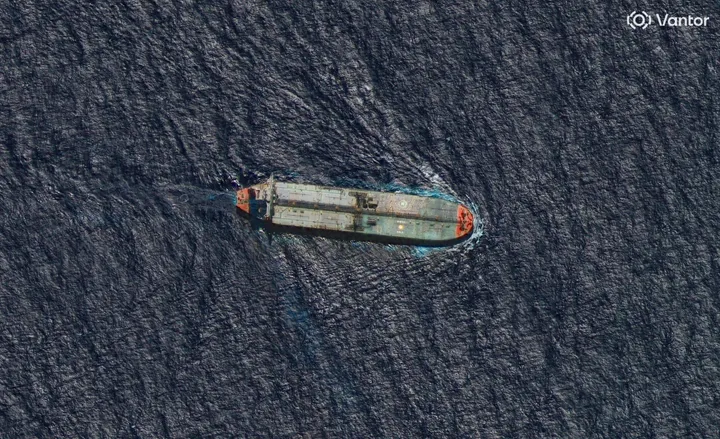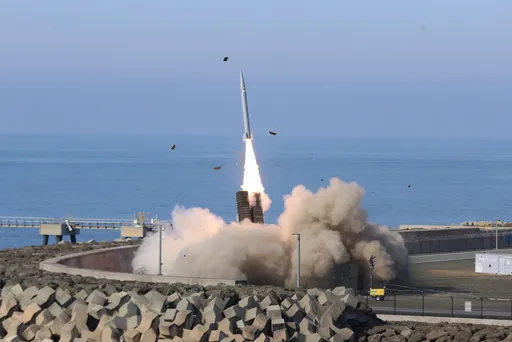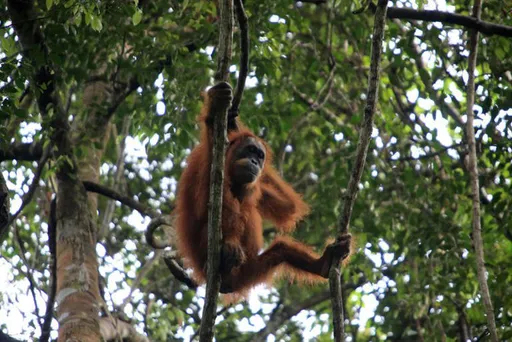In 2015, when a Pakistani American pre-veterinary student visited Marghazar Zoo in Islamabad, she came across a heartbreaking sight: an elephant with gangrened wounds from legs being chained, repetitively bobbing his head side to side.
Most people would not see his “weaving” as disturbing but Samar Khan knew Kaavan’s head movements were a manifestation of stress and depression.
Once she realised zoo authorities were not taking her concerns seriously, Khan took matters online and petitioned Islamabad authorities, the Born Free Foundation and Peta on Change.org. After all, the platform has seen more success with armchair civic participation than other forms of mobilisation in sparking change.
A doctor and a lawyer's fight for animal rights
Dr Khan, now a practising veterinarian in California, has seen her efforts to free Kaavan culminate in his retirement in a Cambodian sanctuary after some 30 years of neglect in the Islamabad zoo.
You could say she “kick-started” the movement, Owais Awan, an Islamabad lawyer and now local animal relocation consultant, told TRT World. Dr Khan and Awan’s efforts led to the zoo on Wednesday to close its doors in its current form after 42 years.
Awan has spent the last two years plying the courts to ensure the zoo is no longer allowed to house animals.
“After the petition, Islamabad locals took up the case and pushed the government for his release,” Dr Khan told TRT World. “There were international protests and even Cher got involved.”
“Her petition built momentum, it’s a joyous thing when a petition is materialised into something real,” Awan said.
Eventually, after months of dragging their feet and some backtracking, authorities, including Islamabad Wildlife Management Board (IWMB), gave in to a May high court order to relocate the animals.
But the story of Islamabad’s zoo isn’t one straight line from petition to Kaavan and two Himalayan bears Bubloo and Suzie finding species-appropriate homes abroad.
The story is split into tandem narratives where each actor sees different endings. For IWMB, the end of Islamabad zoo is just the beginning for a new animal project, more on that later.
READ MORE:Kaavan, Pakistan's lonely elephant, lands in Cambodia to start new life
READ MORE: Sickly dancing bears leave Pakistan as Islamabad zoo closes
Where it all started, Islamabad's Marghazar Zoo
Zoos all over the world are evil places, prisons with a cavalier audience. But zoos in Pakistan are a death trap. Marghazar Zoo was no different.
“When you see the animals, you can see it’s just dead inside,” said Marion Lombard, a project director at Four Paws, a Vienna-based animal welfare group which helped relocate some 38 animals from the zoo.
Dr Khan’s petition offers a bleak reminder of how Kaavan’s mate Saheli died of neglect at 22 years in that zoo – even in captivity, elephants live around 70 years. When Saheli died in 2012, officials packed her carcass in ice for a delayed autopsy that showed untended leg injuries forced her to lie in a position that caused a heart attack.
Islamabad zoo never learnt its lesson, not from Saheli, not from the many othertragedies in zoos across Pakistan.
July 2020 bore witness to Islamabad zoo’s actions resulting in an African lion, 12, and lioness, 9, dying as its employees mishandled a court-manded relocation transfer.
An expert assessment, seen by TRT World, listed out the adverse conditions that lead to death. The charge-sheet ranged from unskilled Islamabad zoo staff, the lions' emaciation, dehydration, multiple haemorrhages to burnt paws and smoke toxicity (the latter resulting from zookeepers using fire torches to scare the big cats from their cage into transport).
And yet, Awan, who founded pressure group Friends of Islamabad Zoo, and others had to rely on several court reminders before Pakistan’s Climate Ministry and IWMB agreed to relocate Kaavan to Cambodia or the bears to Jordan's Al Ma'wa sanctuary. At one point, there were even rumours of an effort to bring another elephant to join Kaavan from Sri Lanka.
“There was a lot of pushback from government officials. A lot of false promises for release were made early on and it was very frustrating, in the end, it became a 5-year-long struggle to get [Kaavan] out,” Dr Khan said.
A doctor who sees every mission as possible
Enter Dr Amir Khalil of Four Paws. Four Paws has worked bigger miracles, saving animals from warzones in the Middle East, rescuing dancing bears, circus and captive bears in eastern Europe and dogs and cats from slaughter in the Far East.
When Dr Khalil, who helped Kaavan shed 500 kilogrammes (no mean feat) before his journey to Cambodia, met Suzie and Bubloo, they were in pain. They were naturally “aggressive” as a result of confinement in a species-inappropriate location, “unable to go into natural hibernation, suffering mentally and physically”.
A former dancing bear, most of Suzie’s teeth had been removed by her previous owners; Bubloo had an infected tooth which needed to be removed.
Dr Khalil told TRT World, when he arrived at Islamabad zoo, Suzie “was nearly dying” of an infected surgical chest wound which forced him to put her through another surgery, but a life-saving one.
“There is a lack of experience within zoo staff,” Dr Khalil pointed out.
Some influential Pakistanis have been accused of lobbying the government to keep Suzie and Bubloo in the country, including the new management of IMWB. Others, uncomfortable with the negative publicity the zoo's mistreatment of animals brought to the country, think the animals should have been kept in Pakistan no matter the cost.
In Al Ma’wa sanctuary in Jordan, Dr Khalil said each bear has 5,000 sq km in forest ground, each with their own swimming pools and will be rehabilitated to live together.
“Suzie and Bubloo soon should be enjoying ‘the life’ living like bears,” Dr Khalil said on Tuesday, before leaving for Al Ma’wa where they all safely reached on Thursday and reported after landing at the sanctuary that the two were doing well in a quarantine area.
"Suzie is sleeping nearly all the time like hibernation or semi-hibernation," he told TRT World. "Bubloo is very active, excited but also scared of new things in his quarantine enclosure but in general all is okay," Dr Khalil reported in his characteristic muted but cheerful tone.
For Dr Khalil, this is a story as old as time itself – he will keep going where it takes him as long as he can, from Pakistan to Jordan to any place where an animal calls for help.
Where it was meant to end, Islamabad's Marghazar Zoo
Back in Pakistan, IWMB Chairperson Rina Saeed Khan has plans to establish a 0.3 sq km conservation centre, including the site of the old zoo, she told TRT World. The plans are set for approval in December, she said, and $11.2 million have been set aside for the Margalla Wildlife Conservation Centre and a national park.
According to the IWMB director, the conservation centre’s design will include natural, open-area habitats for wildlife and will be completed by 2023, Saeed told TRT World.
The plans include a rescue centre for wild animals trapped or injured by poachers, with “scientific management” of the centre and veterinary hospital, “the first of its kind in Pakistan.”
Without a deeper dive into the plans and finances, a conservation centre for indigenous species sounds like the first step to ending the zoo culture. However, Saeed went on to say the habitats were also meant for “regional animals and the species that have been sent out from the zoo will be brought back in phases.”
Some 400 animals from the zoo were relocated in different enclosures around Islamabad, Saeed said.
A document part of court filings from the summer show while some of the zoo animals were relocated to other zoo-like spaces, others like bulls, deer (two of whom died) and the lions who met their tragic end during transfer were meant for a deer enclosure smack next to a busy main thoroughfare and a private breeding farm.
However, Saeed did not respond to follow-ups about the kind of arrangements have been made for the future with the facilities where animals were sent.
For Saeed, the story came full circle back to another project based on bringing animals into state care. Which means Awan’s narrative has probably also not ended as he is committed to the cause of wildlife and animal laws, which is how he got involved in the first place — as counsel on a petition asking the court to recognise animal rights in Pakistan.
Dr Khan's story will also continue as there is more work to be done in Pakistan, regardless of what happens in Islamabad.
“I won’t rest until zoo animal welfare is improved and legislation is made to protect these animals,” she said.
“My next project is to help the Karachi elephants who are currently chained in Karachi Safari park and zoo. They are African elephants who were stolen from their herd in 2009 and are languishing in hot metal cages in the zoo.”
As Awan said, “Kaavan isn’t the world’s loneliest elephant”, a phrase the media frequently used to describe him.
“There are hundreds of elephants still in captivity” probably less loved and cherished than Kaavan.
























